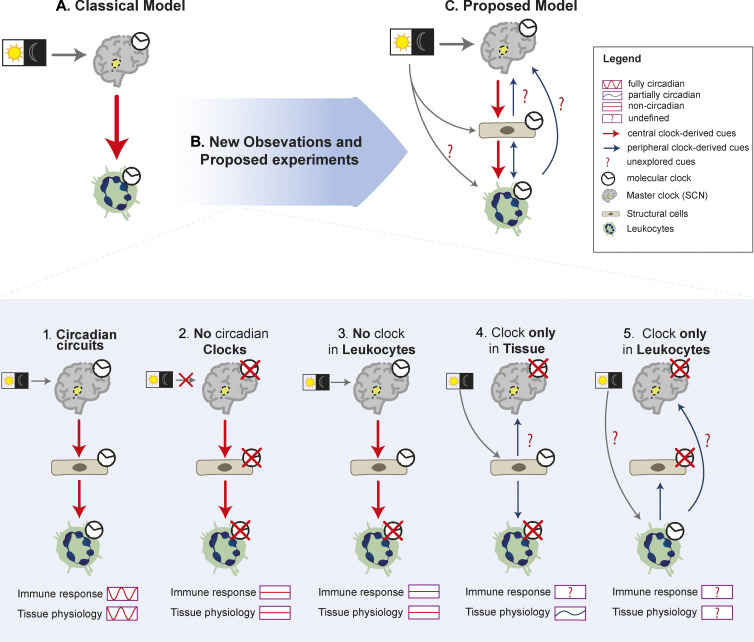Figure 2.
Modeling the architecture of circadian immune circuits. (A) Depiction of the classical model of circadian immune circuits whereby circadian clocks in innate immune subsets are under direct control of the master clock. (B) The model is refined by recent observations that consider at least three elements in the circuit (SCN and structural and immune cells). The presence or depletion of the internal clock in each component of the circuit leads to specific circadian patterns in immune response or tissue physiology. Rescue of a functional clock in specific components in an otherwise arrhythmic mouse (models 4 and 5) will be needed to understand how the circuits are actually organized. (C) Integrating current and future analyses proposed in the text and shown in B will enable building a more accurate model of how these circuits work, including defining whether peripheral clocks sense diurnal changes and deliver circadian cues to the other components of the circuit.

